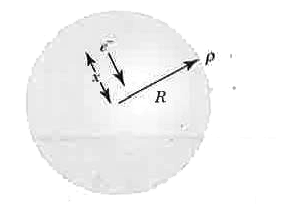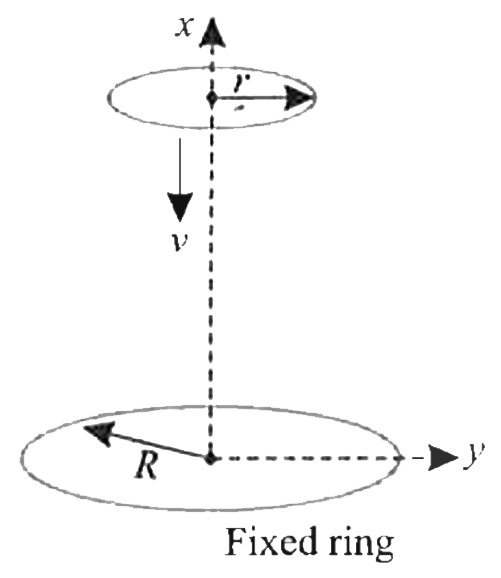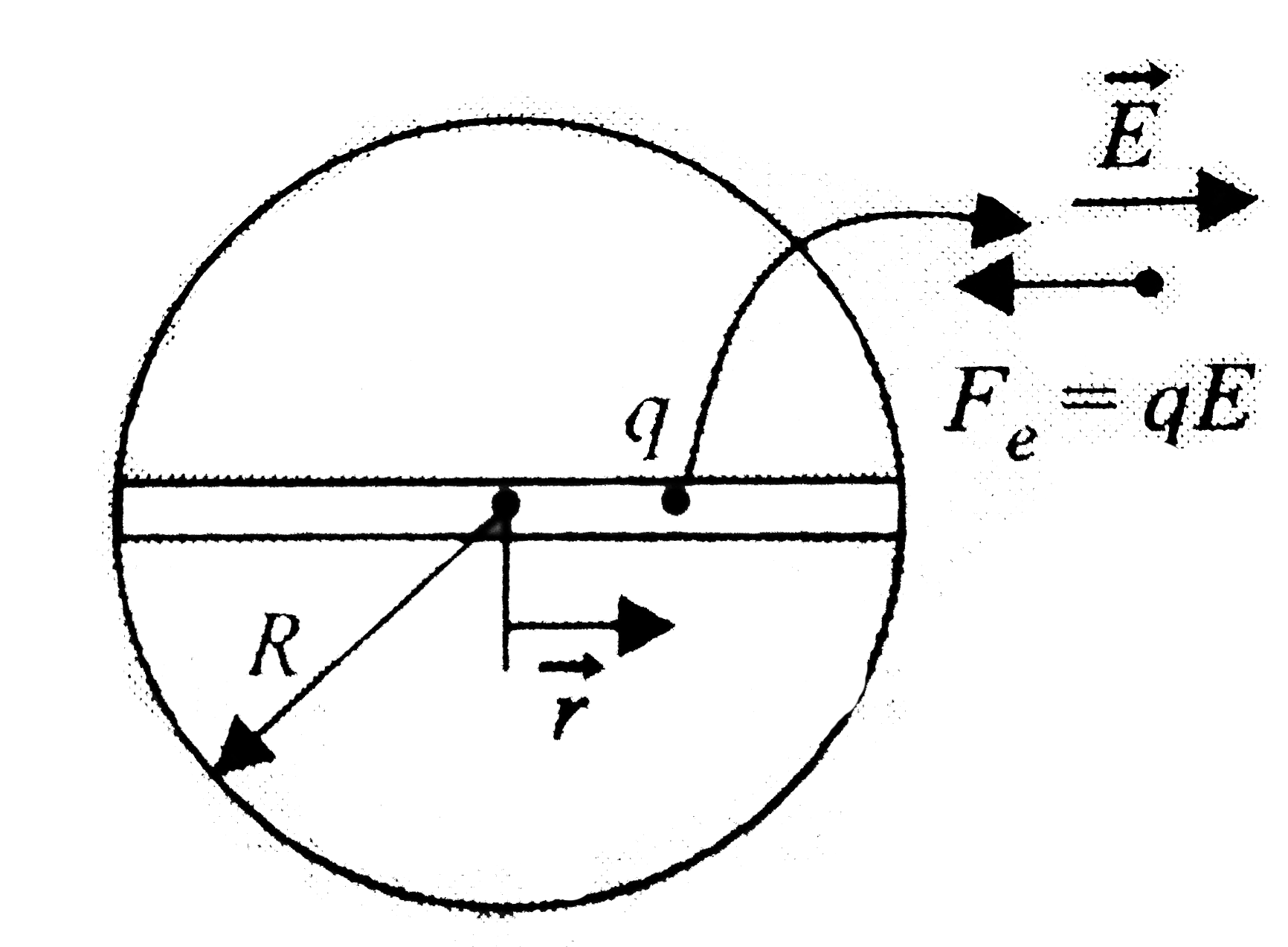An electron is releaed from the surface of a uniformly and positively charged sphere (volume charge density r, fig) Show that the electron will exceute SHM and find its time period

Since the electron will be negatively charged, it will be pulled by the positively charged sphere. The condition for the simple harmonic motion (SHM) is that the force should be proportional to the displacement x from the mean position.
At a distance x from the center, the face
Since this force is proportional to distance x from the mean position (center) and directed toward it, the motion should be simple harmonic. Solving this, we get
But in an SHM,
Here the electron was moving along the diameter. Suppose that this electron was allowed to move only along a chord, starting from rest. In that case also the motion of the electron will be simple harmonic. A component of the force will be balanced by the walls of the tunnel in which electron moves. The net force will come out to be proportional to the distance from the center of the chord which will be the mean position in this case. Even the time period will come out to be the same
Topper's Solved these Questions
- BOOK - RESNICK AND HALLIDAYCHAPTER - GAUSS' LAW EXERCISE - CHECKPOINT7videos
GAUSS' LAW
- BOOK - RESNICK AND HALLIDAYCHAPTER - GAUSS' LAW EXERCISE - PROBLEMS42videos
GAUSS' LAW
- BOOK - RESNICK AND HALLIDAYCHAPTER - FORCE AND MOTION-IIEXERCISE - PRACTICE QUESTIONS (Integer Type)1videos
FORCE AND MOTION-II
- BOOK - RESNICK AND HALLIDAYCHAPTER - GEOMETRICAL OPTICS : REFLECTION EXERCISE - PRACTICE QUESTIONS (Integer Type)3videos
GEOMETRICAL OPTICS : REFLECTION
Similar Questions
A ring of radius R is placed in the plane its centre at origin and its axis along the x-asis and having uniformly distributed positive charge. A ring of radius r(<<R) and coaxial with the larger ring is moving along the axis with constant velcity , then the variation of electrical flux (ϕ) passing through the smaller ring with position will be best represent by :
 View Solution
View SolutionFind out electric field intensity due to uniformly charged solid non-conducting sphere of volume charge density ρ and radius R at following points :
(i) At a distance r from surface of sphere (inside)
(ii) At a distance r from the surface of sphere (outside)View Solution
Knowledge Check
- Question 1 - Select One
An insulating solid sphere of the radius R is charged in a non - uniform manner such that the volume charge density ρ=Ar, where A is a positive constant and r is the distance from the centre. The potential difference between the centre and surface of the sphere is
AAR8ε0BAR4ε0CARε0DAR2ε0 - Question 2 - Select One
An insulating solid sphere of the radius R is charged in a non - uniform manner such that the volume charge density ρ=Ar, where A is a positive constant and r is the distance from the centre. The potential difference between the centre and surface of the sphere is
AAR8ε0BAR4ε0CARε0DAR2ε0
Find out electric field intensity due to uniformly charged solid non-conducting sphere of volume charge density ρ and radius R at following points :
(i) At a distance r from surface of sphere (inside)
(ii) At a distance r from the surface of sphere (outside)View SolutionA smooth chute is made in a dielectric sphere of radius R and uniform volume charge density. ρ. A charge particle of mass m and charge -q is placed at the centre of the sphere. Find the time period of motion of the particle?
 View Solution
View SolutionA smooth chute is made in a dielectric sphere of radius R and uniform volume charge density. ρ. A charge particle of mass m and charge -q is placed at the centre of the sphere. Find the time period of motion of the particle?
 View Solution
View SolutionWork done in moving a positive charge from the centre of a hollow uniformly charged sphere to its surface is zero. Does it imply that the potential is zero inside the sphere?
View SolutionA system consists of a uniformly charged sphere of radius R and a surrounding by a medium with volume charge density ρ=ar, where α is a positive constant and r is the distance from the centre of the sphere. If NαR2 is the charge on the sphere when the electric field intensity outside the sphere is independent of r. What is the value of N ?
View SolutionAn insulating solid sphere of the radius R is charged in a non - uniform manner such that the volume charge density ρ=Ar, where A is a positive constant and r is the distance from the centre. The potential difference between the centre and surface of the sphere is
View Solution

